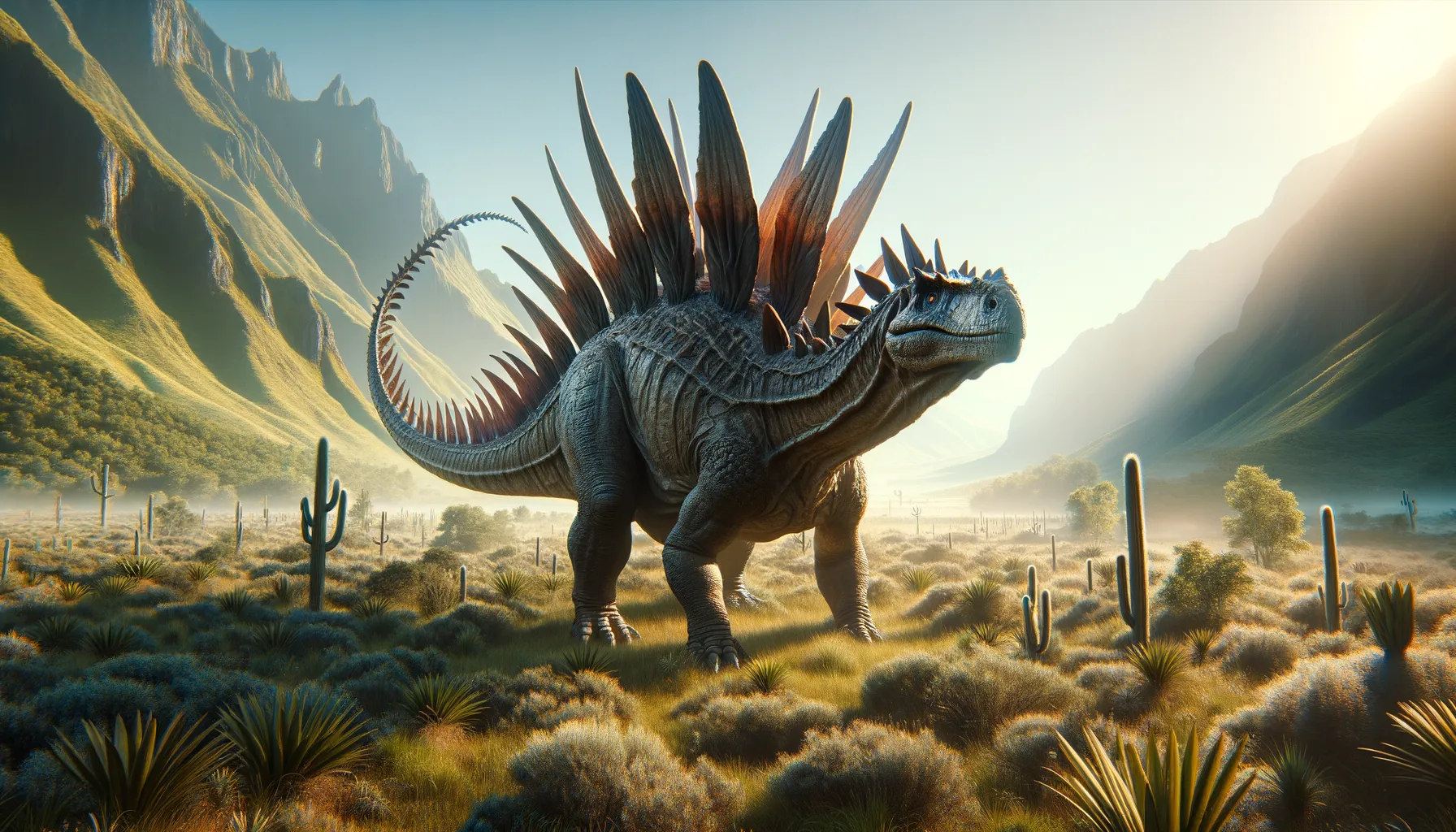
Ferganastegos
Armored giant with a curious twist.
Period
Jurassic
Length
Reached lengths of approximately 20 feet.
Height
Stood about 4 feet at the hips.
Weight
Weighed approximately 2 tons.
Ferganastegos was an ancient herbivorous dinosaur that roamed the earth approximately 150 million years ago during the Jurassic period. It belonged to the Stegosaur family, known for its distinctive row of bony plates along its back and spiked tail. This dinosaur thrived in what is now Central Asia, showcasing unique adaptations that fascinated paleontologists for decades. Its discovery has provided crucial insights into the evolution and lifestyles of armored dinosaurs.
Diet
Ferganastegos was a herbivore, primarily feeding on low-lying vegetation like ferns and cycads. Its beak allowed it to clip tough plant materials, which it could digest in its large stomach.
Hunting
As a herbivore, Ferganastegos did not hunt but instead foraged in groups for safety. Its diet consisted mostly of fibrous plants rather than prey.
Environmental challenges
Ferganastegos faced challenges from changing climates and volcanic activity during the Jurassic period. Predation threats from large carnivorous dinosaurs necessitated its advanced defensive adaptations. It had to compete with other herbivores for food resources, making foraging strategies essential to survival.
Speed
Ferganastegos was slow-moving, typical of large herbivores.
Lifespan
Estimated to live up to 30 years.
First discovery
Discovered in the Fergana Valley of Kyrgyzstan.
Fun Facts
- Ferganastegos was a type of stegosaur, a group of plant-eating dinosaurs known for their distinctive plates and spikes.
- This dinosaur lived during the Middle Jurassic period, around 165 million years ago, in what is now Uzbekistan.
- Ferganastegos had large, bony plates along its back, which likely served as protection and possibly helped with temperature regulation.
- The name 'Ferganastegos' comes from the Fergana Valley, where its fossils were discovered, combined with 'stegos', meaning roof in Greek, highlighting its plated back.
- Unlike some other stegosaurs, Ferganastegos was relatively small, estimated to be about the size of a modern-day cow.
- Ferganastegos is a unique find because stegosaurs from the Middle Jurassic are relatively rare, making its discovery important for understanding dinosaur evolution.
- Ferganastegos likely moved in herds, using numbers to protect themselves from predators.
Growth and Development
Ferganastegos likely had a long developmental period before reaching full maturity, indicated by the growth rings in its bones. Juveniles had smaller plates and spikes, growing larger and more robust as they aged for better protection. Social learning from adults may have played a role in their development.
Habitat
Ferganastegos lived in lush, semi-arid regions with seasonal climates in Central Asia. Its preferred habitat included open woodlands and floodplains rich in vegetation. The environment supported a diverse ecosystem, welcoming various dinosaur species.
Interaction with other species
Ferganastegos likely shared its habitat with other herbivores and had minimal direct interaction. Its main interactions were likely with predators, where its physical defenses were crucial. It had a symbiotic relationship with smaller animals that may have fed on insects disturbed by its foraging.
Natural lifespan
Ferganastegos had a natural lifespan of roughly 25 to 30 years in the wild.
Reproduction
Reproductive behavior likely included egg-laying, with nests built in safe, hidden areas. Mating rituals potentially involved the display of back plates to attract mates. Young Ferganastegos may have remained protected within family groups until they matured.
Social behaviour
Ferganastegos likely lived in small herds, enhancing protection against predators. Social bonds were possibly maintained through communication like vocalizations or visual signals. Group living facilitated learning behaviors and efficient foraging strategies among members.
Fossil locations
Fossils of Ferganastegos have primarily been found in the Fergana Valley, Central Asia. These discoveries offer significant insights into the Jurassic fauna of the region. Paleontologists continue to explore these areas to fully understand its distribution and ecological niche.
